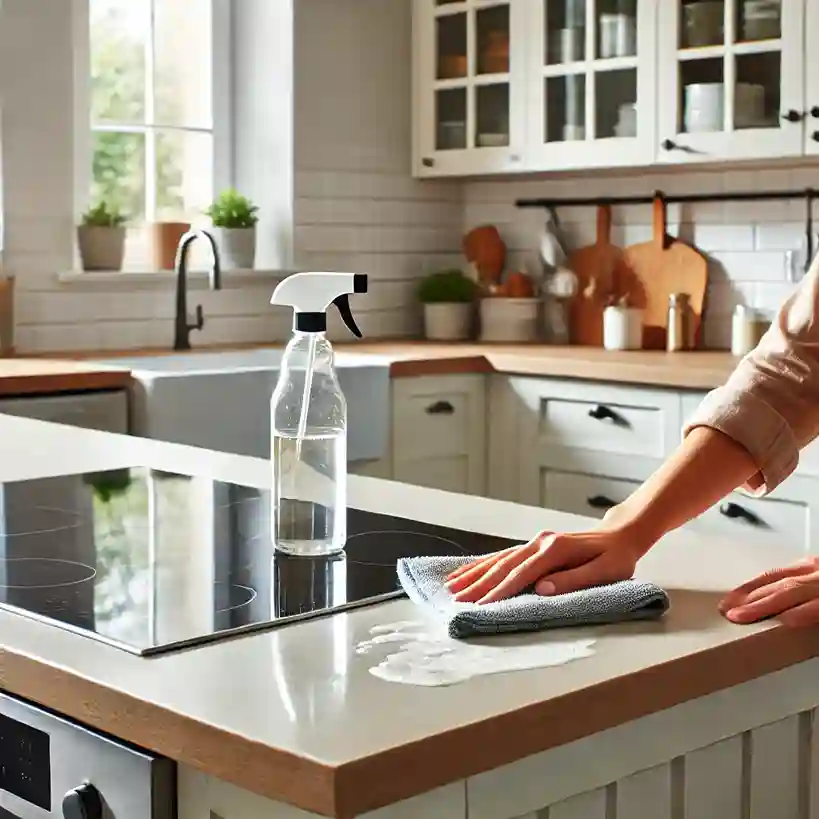A greasy kitchen can be challenging to maintain, especially with daily cooking. Over time, grease builds up on surfaces, appliances, and even walls, making your kitchen look unclean and unhygienic. If you’re struggling with sticky counters, greasy cabinets, or grimy appliances, this guide will help you restore your kitchen’s shine efficiently.
Why Regular Kitchen Cleaning Matters
Keeping your kitchen grease-free is essential for multiple reasons:
- Prevents bacteria and mold growth
- Reduces foul odors
- Enhances appliance efficiency
- Creates a healthier cooking space
- Prevents permanent stains and damage
Now, let’s dive into the most effective ways to clean a greasy kitchen thoroughly.
Step-by-Step Guide to Cleaning a Greasy Kitchen
1. Gather Your Cleaning Supplies
Before starting, ensure you have the following:
- Dish soap or degreasing cleaner
- White vinegar
- Baking soda
- Warm water
- Microfiber cloths
- Scrub brush or sponge
- Spray bottle
- Lemon juice
- Hydrogen peroxide (for deep cleaning)
2. Degrease Kitchen Cabinets and Countertops
Grease accumulates on cabinets and countertops over time, making them sticky. Follow these steps:
- Mix equal parts white vinegar and warm water in a spray bottle.
- Spray the mixture on greasy surfaces and let it sit for 5 minutes.
- Wipe clean with a microfiber cloth.
- For stubborn grease, sprinkle baking soda, scrub gently, and rinse.
- For extra shine, use a few drops of lemon juice for a fresh scent and natural degreasing.
3. Clean Greasy Appliances Effectively
Kitchen appliances are prone to grease buildup. Here’s how to clean them efficiently:
Refrigerator
- Remove all items and shelves.
- Wipe the interior with warm, soapy water.
- Dry with a clean towel before placing items back.
- For professional Fridge Repair services, ensure your appliance functions optimally.
Stovetop and Oven
- Remove burners and soak them in soapy water.
- Use a baking soda paste (baking soda + water) to scrub away grease.
- Wipe down with a damp cloth.
- If your stove isn’t functioning properly, consider Stove Repair for better performance.
4. Floors and Walls: Removing Hidden Grease
- Use a mop with warm water and dish soap to clean greasy floors.
- For walls, mix warm water with vinegar and wipe down using a sponge.
- Avoid abrasive cleaners that may damage surfaces.
- Hydrogen peroxide can be used on tiles for extra shine and deep cleaning.
5. Deep Cleaning the Kitchen Sink and Drains
The kitchen sink and drains often accumulate grease and food debris. Here’s how to clean them:
- Pour a mixture of baking soda and vinegar down the drain.
- Let it sit for 10 minutes before rinsing with hot water.
- Scrub the sink with a paste of lemon juice and baking soda for freshness.
- Use a drain strainer to prevent food particles from clogging the pipes.
Eco-Friendly Cleaning Options
Want a greener approach? Try these natural degreasers:
- Lemon Juice: Cuts through grease and leaves a fresh scent.
- Baking Soda: A gentle abrasive that removes sticky residue.
- Castile Soap: A plant-based cleaner effective against grease.
- Hydrogen Peroxide: Great for deep cleaning and disinfecting.
Benefits of Professional Kitchen Cleaning Services
Hiring a professional cleaning service offers multiple advantages:
- Deep cleaning for hard-to-reach areas
- Use of commercial-grade degreasers
- Saves time and effort
- Ensures appliance longevity
- Custom cleaning solutions for different kitchen types
- Safe, non-toxic cleaning options for households with kids and pets
Cost Factors of Professional Kitchen Cleaning
The cost of professional cleaning varies based on:
- Kitchen size and grease level
- Type of cleaning products used
- Additional services like appliance cleaning
- Location and service provider rates
- Frequency of service (one-time vs. regular maintenance)
How to Choose the Right Kitchen Cleaning Service
When selecting a professional cleaning service, consider:
- Reputation: Check online reviews and ratings.
- Experience: Opt for experienced cleaners for quality service.
- Eco-friendly options: Ensure they use safe, non-toxic products.
- Pricing transparency: Request an upfront cost estimate.
- Service guarantee: Choose providers who offer satisfaction guarantees.
- Specialized cleaning: Look for services that clean specific areas, including grease traps, vents, and exhaust fans.
How to Maintain a Grease-Free Kitchen Daily
- Wipe surfaces immediately after cooking.
- Use a splatter screen when frying to prevent oil from spreading.
- Clean your stovetop and counters daily with a mild degreaser.
- Mop the floors regularly to remove accumulated grease.
- Use an exhaust fan or open windows while cooking to reduce grease buildup in the air.
Final Thoughts: Keep Your Kitchen Grease-Free
Maintaining a grease-free kitchen enhances hygiene, efficiency, and aesthetics. Whether you clean it yourself or hire professionals, regular maintenance prevents buildup and ensures a safe cooking environment. If your kitchen appliances need fixing, don’t hesitate to explore Fridge Repair or Stove Repair services.
Call to Action
Tired of dealing with greasy surfaces? Start implementing these cleaning tips today or hire a professional service for a hassle-free solution! A clean kitchen not only looks great but also ensures a healthier cooking space for you and your family.












